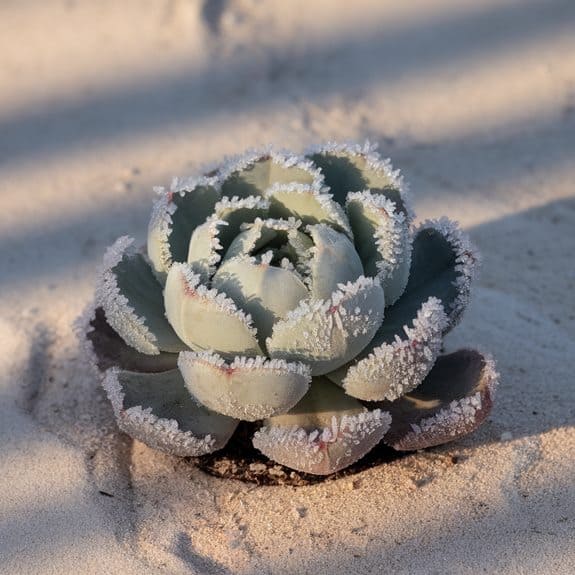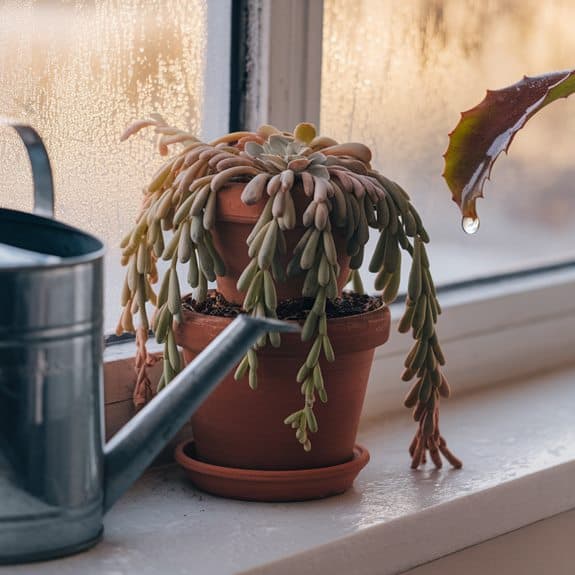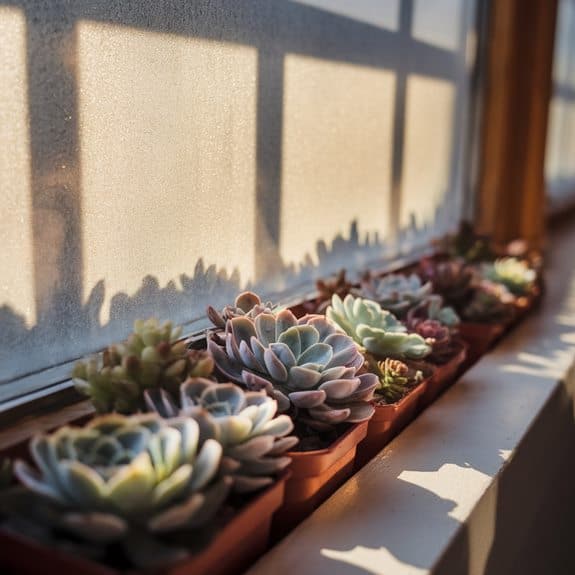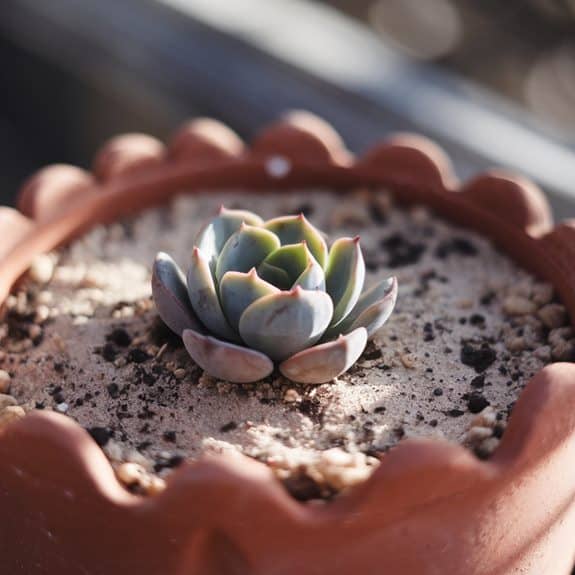Succulent Slumber: Preparing Your Plants for Winter Dormancy
You’ve nurtured your succulents through the warm months, but as winter approaches, your beloved plants need a different kind of care. While these hardy specimens can survive challenging conditions, they’ll thrive during their dormant period only if you understand and guarantee their natural cycle. From adjusting watering schedules to managing indoor temperatures, there’s a surprising amount of strategy involved in helping your succulents rest properly. Let’s explore how you can protect your plants through the cold season and ascertain they’ll emerge vibrant and healthy when spring returns.
Contents
Understanding Winter Dormancy

Plants naturally enter a state of dormancy during winter months when daylight hours decrease and temperatures drop. During this period, your plants slow their growth, reduce water intake, and conserve energy to survive harsh conditions.
Their metabolism slows dramatically, and you’ll notice less new growth. Think of it as your plant’s version of hibernation – a vital survival strategy they’ve developed over millions of years.
Watering Changes for Cold Seasons

You’ll need to reduce your plants’ water intake as winter approaches since they require less moisture during their dormant phase.
It’s best to stop regular watering when temperatures consistently drop below 40°F (4°C), though specific timing varies by plant species and climate.
If you must water during winter, do so only in the morning to prevent ice formation around the roots, which can damage or kill your plants.
Reduce Moisture During Winter
Most established plants require considerably less water during their winter dormancy period. You’ll want to cut back your watering frequency by half or more, depending on your climate. Let the top layer of soil dry out between waterings to prevent root rot.
For outdoor plants, nature’s precipitation is often sufficient unless you’re in an arid region.
When to Stop Watering
Knowing when to stop or reduce watering is essential for protecting your plants during the shift to winter dormancy. You’ll want to start tapering off water about 4-6 weeks before the first frost date in your area. Watch for signs like shorter days and cooling temperatures.
Once nighttime temperatures consistently drop below 50°F (10°C), it’s time to drastically reduce your watering schedule.
Morning Watering Only
Along with reducing water frequency, the timing of watering becomes particularly important during cold seasons. You’ll want to water your plants only in the morning, giving them time to absorb moisture before temperatures drop at night. This prevents water from freezing around the roots, which can damage or kill your plants.
Never water in the evening during cold weather.
Indoor Temperature Management

During winter dormancy, you’ll want to keep your indoor plants in rooms with temperatures between 60-65°F at night and 65-75°F during the day for ideal rest conditions.
To protect your plants from damaging cold drafts, move them away from exterior doors, windows, and air vents that could expose them to sudden temperature changes. You can further insulate vulnerable plants by grouping them together away from cold walls or by using thermal plant coverings during particularly frigid nights.
Maintaining Ideal Room Temps
Proper temperature control plays a vital role in helping indoor plants ease into winter dormancy. You’ll want to maintain temperatures between 60-65°F (15-18°C) during the day and 10-15 degrees cooler at night.
Keep your plants away from drafty windows and heating vents, as sudden temperature fluctuations can stress them. If you’re using grow lights, remember they generate extra heat.
Winter Draft Protection
Cold drafts from windows and doors pose serious threats to indoor plants during winter months. You’ll need to create protective barriers between your plants and these chilly air currents.
Move your plants away from drafty spots, seal window gaps with weatherstripping, and consider using bubble wrap or thermal curtains as insulation. Don’t forget to check your door sweeps and window seals regularly.
Light Requirements During Winter

As winter approaches, indoor plants require significantly less light due to their natural dormancy cycle.
You’ll want to move your plants away from south-facing windows to prevent leaf burn from intense winter sun.
For most houseplants, 6-8 hours of indirect light is sufficient during dormancy.
If you’re using grow lights, reduce their intensity and duration by about 25%.
Protection From Frost Damage
Protecting your plants from frost damage starts with understanding their cold tolerance thresholds. When temperatures drop below freezing, you’ll need to wrap tender plants in breathable fabric or frost blankets.
Move potted plants indoors or against a warm wall. For in-ground plants, add a thick layer of mulch around their base and consider using cloches or row covers overnight.
Soil and Container Considerations

Soil preparation plays an essential role in helping plants weather the winter months. You’ll want to guarantee proper drainage by mixing in perlite or coarse sand, preventing root rot during winter’s wet conditions.
For containers, choose frost-resistant materials like thick plastic or ceramics, and elevate them slightly off the ground. Don’t forget to remove any debris that could trap moisture against your plants.
